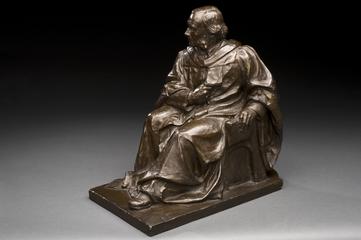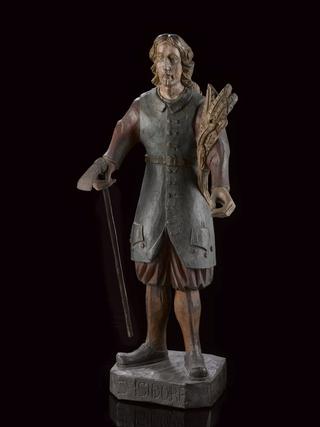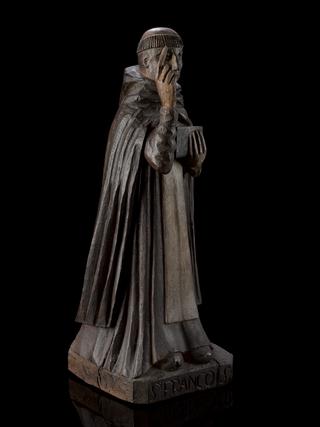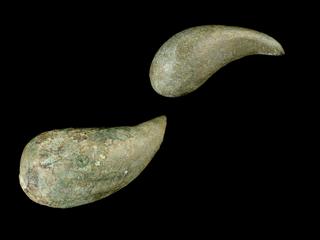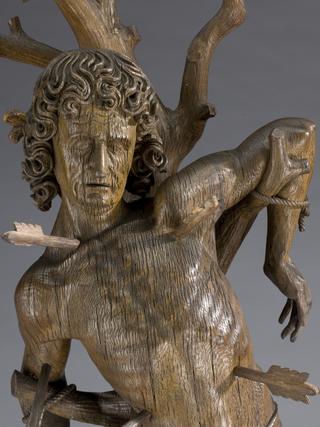
Strigil set (copy), Roman design from 199 BCE-500 CE
- Made:
- 199 BCE-500 CE in Roman Empire
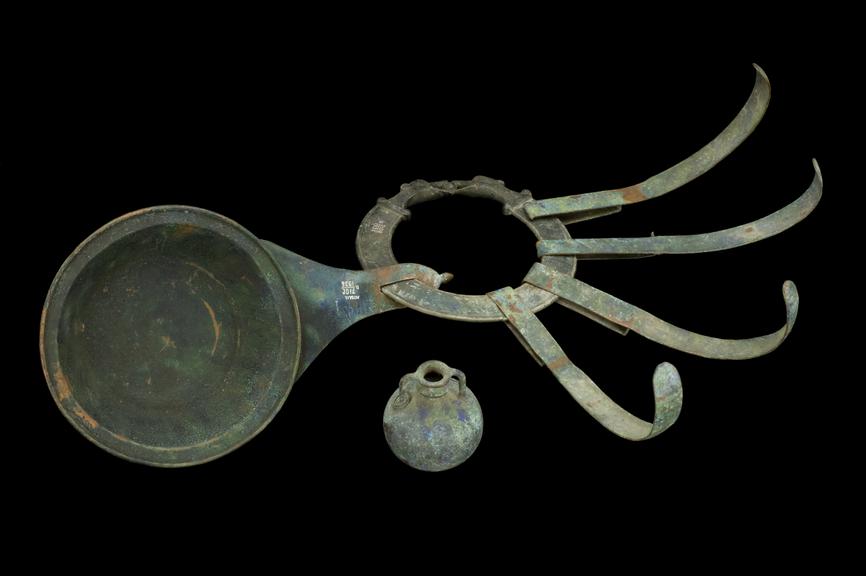
Four strigils and bowl on ring, and bottle, all bronze, Roman, copy
Part of the bathing and personal hygiene routine in ancient Rome involved cleaning the body with oil. Having rubbed the oil in, a strigil was used to scrape away any excess as well as any dead skin and dirt. The small bronze bottle would have been used for the oil. The loop, known as an annulus, is moulded into the shape of a dog’s head. This object is believed to be a copy of an original found in Pompeii, Italy.
Athletes also scraped their skin with strigils to remove dirt, dust and oil from their bodies after exercise. This was sometimes bottled and sold as a medical treatment called gloios to relieve aches, pains and sprains.
Details
- Category:
- Classical & Medieval Medicine
- Collection:
- Sir Henry Wellcome's Museum Collection
- Object Number:
- A128412
- Materials:
- bronze (copper, tin alloy) and complete
- Measurements:
-
overall: 122 mm x 560 mm x 360 mm, 80 mm,
- type:
- strigil
- credit:
- Sommer
